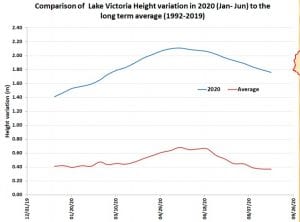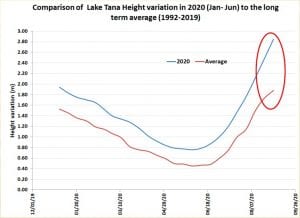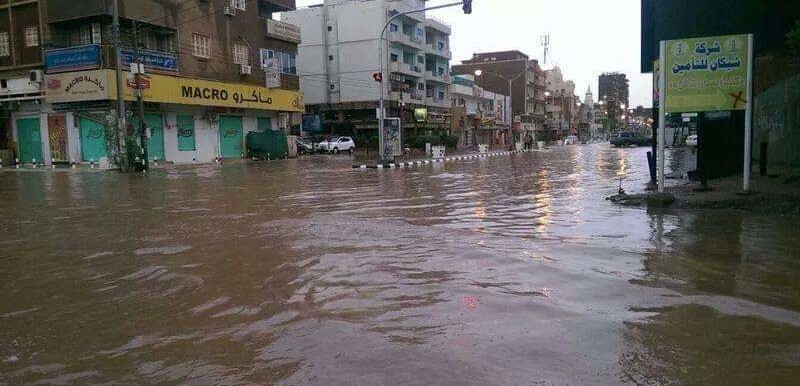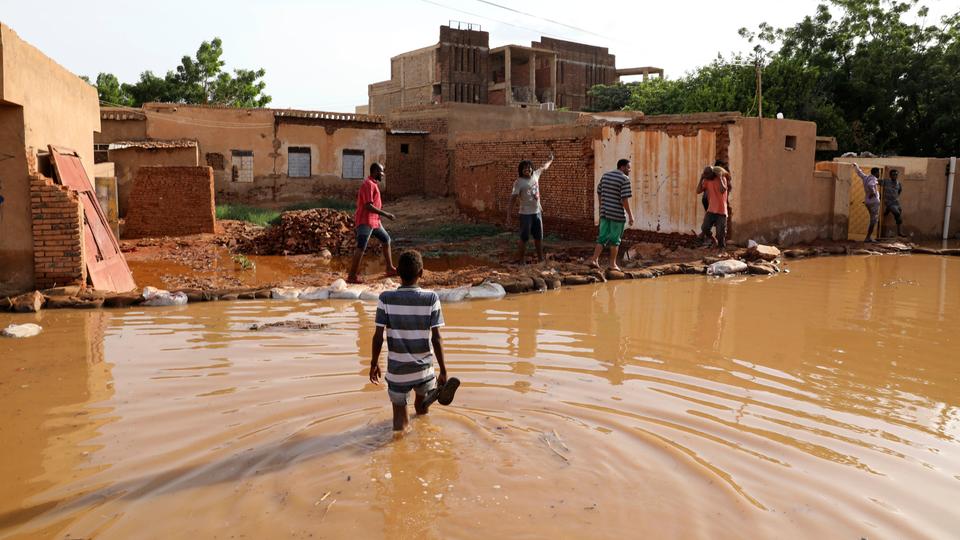Sudan can and plans to do more to mitigate future floods
8 December 2020
Floods are an annual issue for Sudan that impacts tens of thousands of people living close to the Nile. While Sudan has an early warning system in place, the governmental response has generally been reactive, limited to relief support following the disaster, rather than pre-emptive measures to mitigate the impending disaster. This needs to change, experts say, as future floods will only get worse.
This year was a painful reminder of this lack of preparation with unprecedented floods levels. Scientists warn that climate change may further influence fluctuating rainfall rates within the Nile Basin region, ensuring severe future flooding in Sudan.

Reasons behind floods and the climate change impact
Dr Mudathir Zaroug, a climate expert, told Ayin that climate change influences extreme natural events; “By extremes, I mean that floods and droughts will get more intense and have a longer duration, also the frequency of these events will increase – this is seen on global circulation models.” As climate change influences water temperature levels in the Pacific Ocean, this causes the natural phenomena named El Nino and La Nina, affecting rainfall levels in the Ethiopian Highlands. “The Blue Nile –which makes 58-60% of the Nile River—flows from the Ethiopian Highlands,” Zaroug adds. Similarly, he said, variations in temperature levels in the Indian Ocean Dipole leads to heavy rainfall in Lake Victoria –increasing water levels in the White Nile.

Sudan manages floods issues through the Supreme National Council of Civil Defense that is under the supervision of the Council of Ministers and includes representatives from different ministries and other stakeholders.
The Spokesperson of the Supreme National Council of Civil Defense, Col. Abdul Jalil Abdul Rahim, says that they carry out many tasks prior and post floods. “If it wasn’t for our work, this year’s disaster would’ve been much worse. We worked on establishing barriers in vulnerable places, alerted people and stakeholders to take the needed precautions,” he said, adding that they are planning to learn from the disaster and enhance their work.
Gaps in the System
Despite a diverse team of inter-departmental experts within the Council system, their ability to forecast and collect flood data is limited, says the Head of the Flood Early Warning System within the Water and Irrigation Ministry, Redwan Mohamed. “There’s a need for Floods Risk Maps and more awareness on the use of flood forecasting products. Our Early Warning System needs to be extended to cover all flood hazards.” Sudan continues to use an early warning system first introduced by the Dutch government in the nineties that only allows the public 2 – 3 days warning of impending floods instead of using rainfall forecasts for more long-term predictions, Dr Zaroug said. “Sudan has an early warning system since the nineties – it’s very efficient and depends on cold cloud duration, however, it has been neglected by authorities and no upgrades had been done to it,” Dr Zaroug added.
Professor Gamal Abdo, Director of Water Research Center at the University of Khartoum, says that scientific research is essential to develop an effective early warning system that monitors the natural phenomena responsible for floods and droughts. “Early warning should include a system to monitor rainfall in the upper catchments and estimate flow rates and lead times accordingly.” By identifying areas vulnerable to floods, Abdo says, Sudan can conduct better urban planning and even utilize the floodwater for irrigation and other purposes.

Water Management
“Sudan has a long experience in water harvesting and there are hundreds of successful projects that contributed to solving water shortages in many areas,” Professor Abdo says.
Dams’ management can also play a role in mitigating and controlling increased flow, yet due to the sediment issues that impacted reservoirs’ capacity for all Sudanese dams, it is the last option authorities turn to deal with floods. This does not only go for Sudanese dams, Ethiopia’s Renaissance Dam, the most ambitious hydropower project in Africa, managed in cooperation with Sudan, can play a role in controlling the Blue Nile floods in the future.

Urban Planning
While technical developments are sorely needed, says Abdul Rahman Saghyroun, Manager of the Nile River Water Department and Head of the Floods Sub-Committee in the Ministry of Water Resources and Irrigation, monitoring and identifying flood risks in urban settings is also crucial. As urban expansion continues, more and more people are residing in flood-prone areas, Rahman told Ayin, and need the authorities’ help to relocate to more secure, drier areas. “It’s going to be challenging, and it needs substantial funds and work to convince people to move, however, it’s a necessary step to mitigate floods’ impact in the future.” Drainage poses another challenge. “We had a plan in 2019 to address all the infrastructure issues such as housing scheme locations, drainage and other things, but with all the events of that year and then with the Covid-19 this year, we couldn’t carry on with our plans,” he added.
Awareness-raising for communities is also a major factor to achieve resilience according to Abdul Rahman, who says that they are keen to prepare for even more intense floods than experienced 1988 and 2020. “Citizens need to be engaged early on to prepare for the floods, and they must be aware of the dangers of living in exposed areas along the Nile and seasonal streams.” Mohamed adds that more community involvement is needed to assist the government’s Flood Task Force under the Humanitarian Aid Commission that coordinates and facilitates flood preparedness and response efforts.


